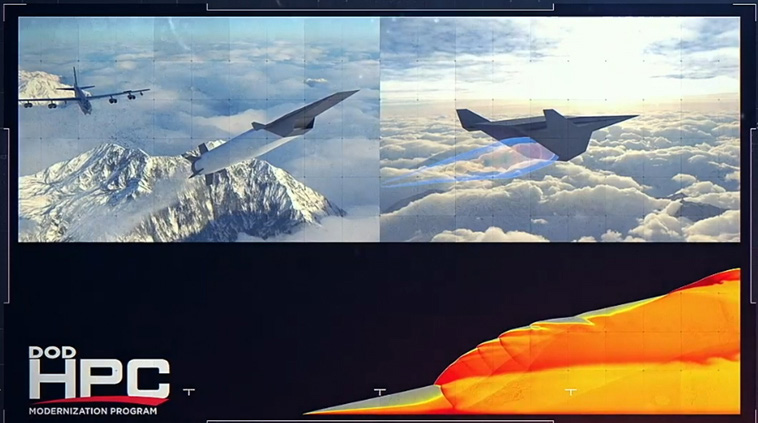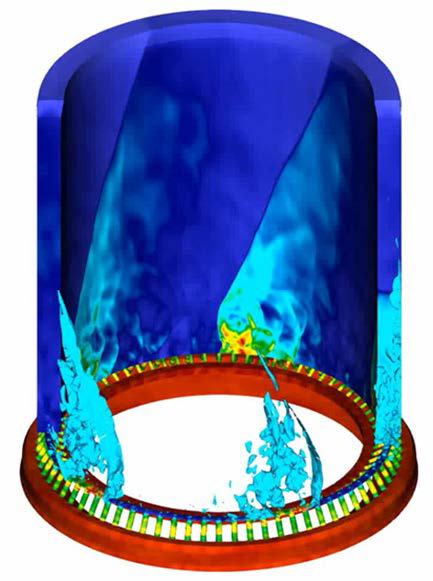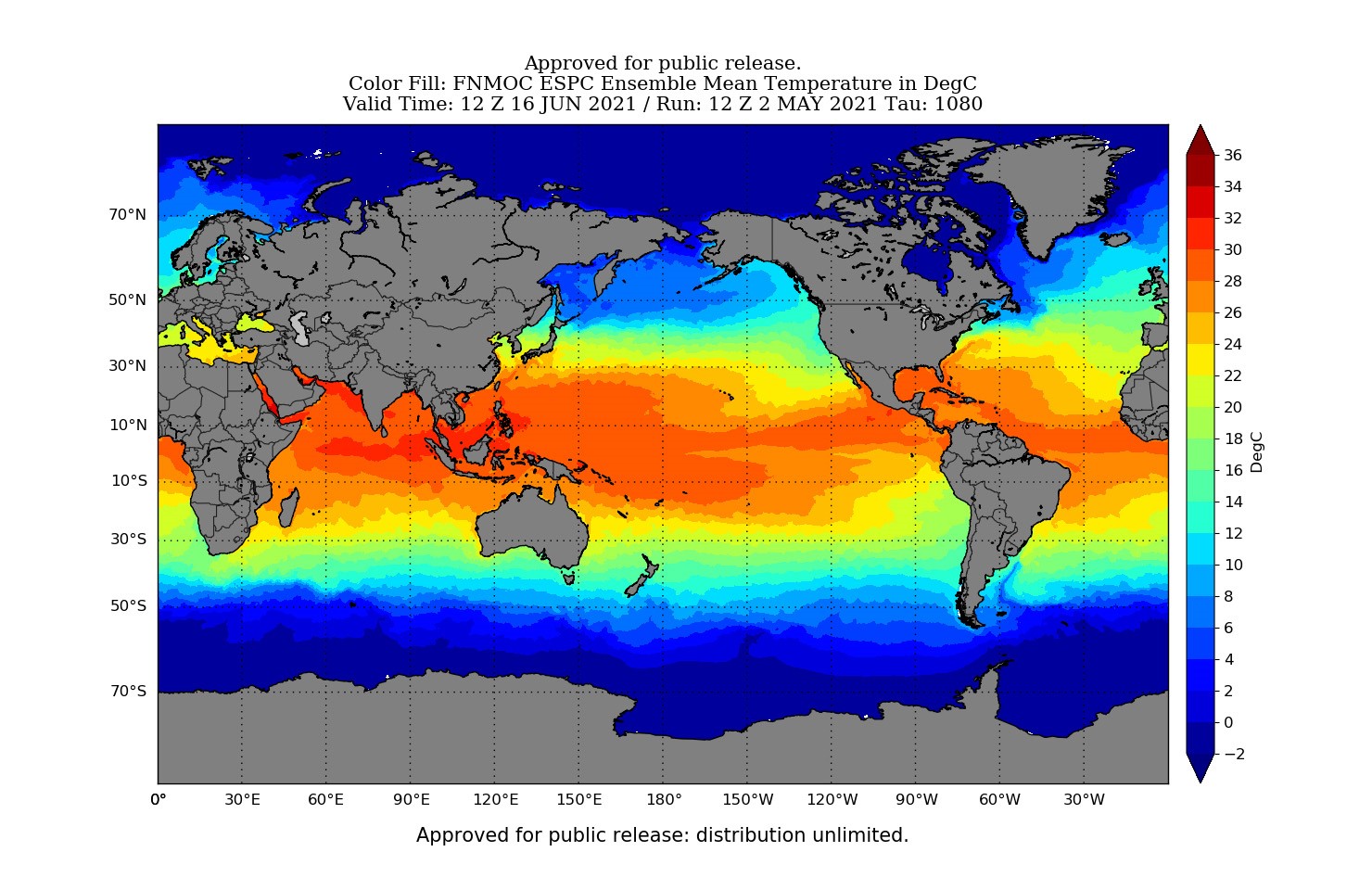Success Stories

The Research and Analysis Center (TRAC) at Army Futures Command conducts studies that will inform the service’s acquisition and doctrine for decades to come. Their work supports development programs such as the Optionally Manned Fighting Vehicle and Future Attack Reconnaissance Aircraft. High demand for TRAC’s tools and models outpaced TRAC’s in-house resources, requiring an alternative workflow.
HPCMP’s PET program created a dynamic, load-balanced workflow for TRAC that takes advantage of HPCMP’s parallel computing resources. PET validated the workflow with two of TRAC’s studies. A workload that took more than eight hours to complete on TRAC’s in-house systems took just 71 minutes on systems at the U.S. Army DEVCOM Army Research Laboratory DoD Supercomputing Resource Center.
Implementing this new workflow increases TRAC’s ability to handle increased study load, shortens timelines, and reduces competition for resources among study teams. Ultimately, this will maintain their ability to conduct studies that inform how the US Army fights the wars of the next decades.

HPCMP’s Defense Research and Engineering Network (DREN) provides the Department of Defense with a fast, secure, and powerful connection across the United States. It enables HPCMP users to connect to our supercomputers remotely, but also facilitates a multitude of science and technology, test and evaluation, and acquisition engineering projects.
Recently, the DREN played an essential role in the creation of a digital twin of Tyndall Air Force Base. When Hurricane Michael destroyed 60 percent of Tyndall in 2018, the United States Air Force partnered with the U.S. Army Engineer Research and Development Center to rebuild the base as an Installation of the Future, complete with a digital twin. This virtual replica of Tyndall serves a multitude of purposes, including guiding the construction process, planning future maintenance, and assessing potential threats to the installation. Bringing together all the data needed to make a digital twin is a steep challenge. The DREN’s high speeds and low latency make it possible.
In 2023, HPCMP finished its transition from DRENIII to DREN4, which features a dedicated backbone, an increase the minimum bandwidth, and more advanced security.

Hypersonic flight presents many engineering challenges that drive current research and development. One is that air may move so fast that there is not enough time for fuel to mix with the air or for the fuel to burn completely before leaving the combustor. Some less-than-ideal solutions include building longer engines or wasting fuel by not burning it, so the US Navy is considering other possibilities for hypersonic flight.
HPCMP has supported the Naval Center for Space Technology in studying a design known as the oblique detonation wave engine (ODWE). The principle behind ODWE is to use the high-speed air flow present in hypersonic flight to initiate and stabilize a detonation wave. This would require fuel injection ahead of the combustor followed by a triggered wave that moves forward at the same speed as the air flowing through the engine. This would produce almost instantaneous fuel combustion. If ODWE becomes a reality, it would enable close-to-maximum efficiency and allow for a short combustor length. HPCMP has enabled high-fidelity modeling of stable oblique detonation waves to understand the initiation, stabilization, and overall dynamics of these types of systems.

HPCMP is helping power the promise of digital engineering.
Digital engineering uses models and data to support decision-making over the whole development timeline from drafts to disposal. By harnessing advances in computational power and data analytics, the United States Department of Defense uses these techniques to field next-generation systems with fewer costs and shorter timelines.
The Air Force Research Laboratory Bandit program aims to build uncrewed aerial vehicles that the DoD can use during adversarial air practice. In March 2022, AFRL awarded a one-year Small Business Innovation Research contract to mature an aircraft design and conduct engine ground testing. The team used HPCMP CREATE’s computational fluid dynamics tools and HPC systems at the AFRL DoD Supercomputing Resource Center (DSRC) and the Army ERDC DSRC to validate the results. This work will also support the engineers as they move forward with evaluating other parts of the aircraft’s flight envelope.
AFRL and their industry partner announced the successful completion of a ground test in January 2023.

More data can be a good thing, but only when you have the tools to effectively use it.
U.S. Armed Forces engineers gather lots of information as they evaluate new weapons systems using the Advanced Joint Effectiveness Model (AJEM). Managed by the Data Analysis Center at the U.S. Army DEVCOM Army Research Laboratory (ARL), AJEM’s primary uses are for ballistic survivability, vulnerability, and lethality analyses.
In recent years, high-performance computing capabilities have made this tool even more useful for the Army, Navy, and Air Force. The ARL DoD Supercomputing Resource Center, one of HPCMP’s five DSRCs, provides computational support for AJEM.
“We can speed up analysis quite considerably with the performance power of HPC — not only with the architecture behind it but with the software and resources HPC has,” said one ARL software developer.

HPCMP Frontier Projects receive extensive computational support that allows them to push the boundaries of science and engineering. In the case of the U.S. Naval Research Laboratory NEPTUNE program, those boundaries go to Earth’s thermosphere -- 300 miles above sea level.
NEPTUNE (Navy Environmental Prediction sysTem Utilizing a Nonhydrostatic Engine) is a deep atmospheric model being used to develop and validate a weather prediction system to replace the Navy’s existing tool. The Frontier Project is testing a unique, whole atmosphere forecasting capability that would extend from the Earth’s surface to 500 km (311 mi) above. This would allow them to predict thermospheric disturbances at unprecedented scales.
This work requires massive amounts of data processing and computational power, both of which HPCMP can provide. This Frontier Project supports existing Navy and Defense Advanced Research Projects Agency (DARPA) efforts by performing numerical experiments with NEPTUNE of the whole atmosphere. The project involves hindcasts at increasing horizontal resolution to validate new physical parameters, data assimilation techniques, and predictions. NEPTUNE is designed to support the U.S. Navy’s capabilities to characterize the current and future state of the battlespace environment to ensure 21st Century dominance.

One HPCMP Frontier Project aims to establish a more efficient computational fluid dynamics-based engineering method for acoustics and trajectory analysis related to the F-35 aircraft weapons bay.
Previously, the Naval Air Warfare Center Aircraft Division (NAWCAD) used HPCMP CREATE’s Kestrel CFD code to evaluate weapons bay acoustics and various other CFD codes to simulate store trajectories. While successful, this work was computationally extensive, and engineers needed a more effective approach for the long term. In this Frontier Project, the Navy is using Kestrel to understand the most significant contributors to store separation sensitivities through a model build-up approach. The investigators will then compare the results to flight test data which will provide the necessary balance between accuracy and efficiency. This project plans to provide an improved certification process for F-35 weapons bay separation using HPCMP’s CFD methods.

Rotating detonation engines (RDE) present a new spin on high-Mach propulsion techniques.
This engine concept spends it fuel by using explosions moving through a circular channel. Compared to current combustion-reaction engines, RDEs would be more compact and provide more thrust with less fuel. This would have obvious benefits for air and space-faring systems.
HPCMP supports multiple areas of RDE development at the Air Force Research Laboratory. With millions of core-hours at our supercomputing resource centers, advanced software and simulation environments, and dedicated experts, we’re working to make RDEs a reality.
For instance, one HPCMP Frontier Project supports an AFRL-led program focused on optimizing RDE injector and nozzle components through modeling and simulation. The goals are to find designs that promote fuel mixing, flow, and thrust in the RDE, which would increase efficiency and enable further technology development.

High performance computing brings clarity to an otherwise cloudy problem – extended weather forecasts.
The U.S. Navy Earth System Prediction Capability (ESPC) combines atmosphere, ocean, and sea ice data to create weather forecasts up to 45 days in advance.
HPCMP supported ESPC through the Frontier Project program by providing millions of core-hours to build the model.
After going live in 2020, ESPC has helped fill a significant forecasting gap for the Navy. Conventional weather outlooks are only reliable up to about 2 weeks, and predictions based on climate data can miss year-to-year variability. By combining short and long-term data, ESPC provides a stronger ability to predict conditions 1-2 months in advance. This will allow the Navy to anticipate sea ice thickness, tropical storms, and whatever else the weather may bring.
